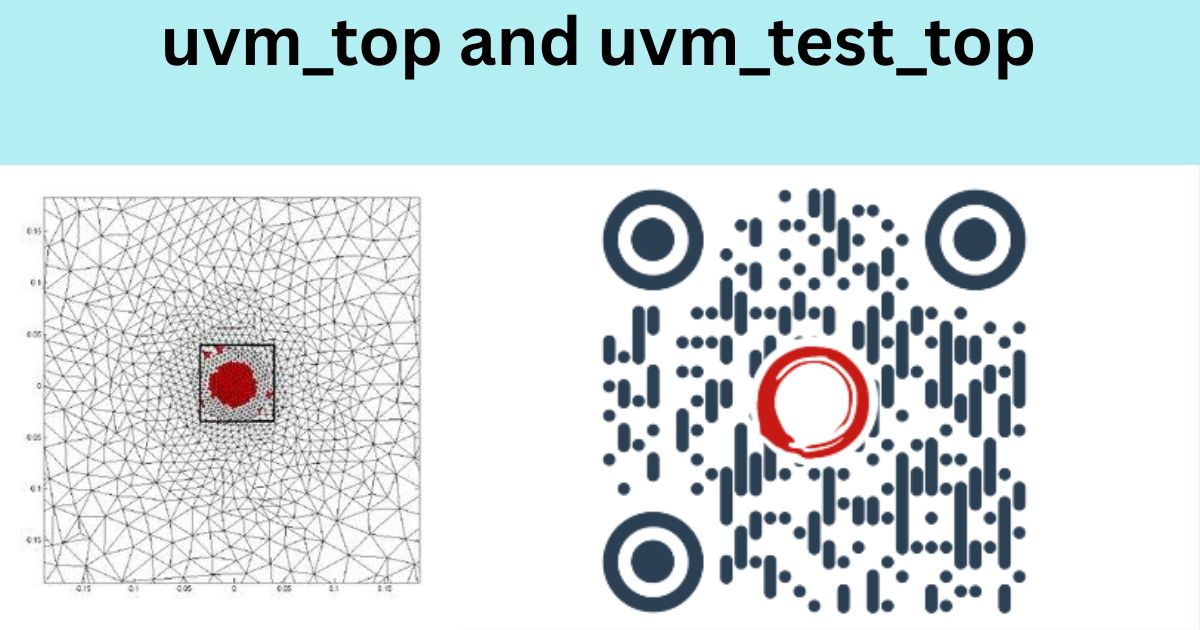In the world of SystemVerilog-based verification using the Universal Verification Methodology (UVM), two important terms that often come up are uvm_top and uvm_test_top. These identifiers are key to understanding the structure and flow of UVM testbenches, and they play a vital role in the instantiation and execution of the verification components.
This article explains what uvm_top and uvm_test_top are, their differences, how they are used, and common practices surrounding them. Whether you’re a beginner or brushing up your knowledge, this guide will help demystify these core UVM concepts.
What is uvm_top?
The uvm_top is a global singleton instance of the uvm_root class. It acts as the central manager for all UVM components in a testbench. As a part of the base UVM library, uvm_top is created automatically and is accessible throughout the testbench.
Role of uvm_top:
- It manages the entire UVM component hierarchy.
- It contains the simulation phasing mechanism.
- It handles command-line arguments, such as
+UVM_TESTNAME. - It tracks all created UVM components via a factory mechanism.
- It provides global reporting and configuration services.
Why is uvm_top important?
In UVM, everything stems from uvm_top. It is the starting point for phase execution and overall test control. It does not contain specific test logic itself, but acts as a container for all the components created during elaboration.
What is uvm_test_top?
The uvm_test_top is a global reference to the top-level test component that is created by the UVM factory when simulation begins. This object is automatically assigned when the test specified by +UVM_TESTNAME=<test_name> is created.
Characteristics of uvm_test_top:
- It is not a class or a singleton like
uvm_top, but rather a handle (reference). - It points to the top-level component of the test (which is derived from
uvm_test). - It allows users to directly access the top-level test object from anywhere.
Example:
initial begin
run_test(); // This triggers the test creation and phase execution
end
When run_test() is called, UVM uses the factory to create an object of the test specified in +UVM_TESTNAME, and assigns it to uvm_test_top.
Difference Between uvm_top and uvm_test_top
| Feature | uvm_top | uvm_test_top |
|---|---|---|
| Type | Instance of uvm_root (singleton) | Handle to user-defined test component |
| Created by | UVM Framework automatically | Assigned when run_test() is called |
| Purpose | Manages all components and phases | Points to the specific test instance |
| Hierarchical Role | Root of UVM hierarchy | Child of uvm_top |
| Access Scope | Global | Global |
| Can be replaced? | No | Assigned once, not replaced manually |
Typical Usage of uvm_top
Here’s an example of how uvm_top may be accessed:
uvm_top.print_topology(); // Prints entire UVM hierarchy
This is useful for debugging and understanding how your components are organized.
You can also use it for:
- Finding components by name:
uvm_component comp;
comp = uvm_top.find("env.agent.driver");
- Traversing the testbench:
uvm_top.traverse(uvm_visitor);
Typical Usage of uvm_test_top
After the test is created via run_test(), you can use uvm_test_top to directly access the top test:
initial begin
#10;
$display("Test name is: %s", uvm_test_top.get_name());
end
This is helpful if you want to access test-specific methods or configurations from outside the test component.
Practical Example: Using Both uvm_top and uvm_test_top
class my_test extends uvm_test;
`uvm_component_utils(my_test)
my_env env;
function new(string name = "my_test", uvm_component parent = null);
super.new(name, parent);
endfunction
function void build_phase(uvm_phase phase);
super.build_phase(phase);
env = my_env::type_id::create("env", this);
endfunction
endclass
module tb;
initial begin
run_test("my_test");
end
endmodule
Once this simulation starts, the testbench hierarchy will look like:
uvm_top
|
---> uvm_test_top (my_test)
|
---> env
You can then use uvm_top.print_topology() to visualize this hierarchy.
Common Misunderstandings
1. Are uvm_top and uvm_test_top the same?
No. uvm_top is the UVM root, while uvm_test_top is a reference to the user-defined test component.
2. Can I assign to uvm_test_top manually?
No. It is automatically set by the UVM framework when the test is created via run_test().
3. Can I create multiple uvm_test_top components?
No. Only one test is created per simulation, and only one uvm_test_top is assigned.
Tips for Effective Usage
- Always use
+UVM_TESTNAME=<your_test>for flexibility in simulation. - Use
uvm_top.print_topology()during debug to verify structure. - Avoid modifying
uvm_test_topmanually—let UVM handle it. - Use
uvm_test_topsparingly, only when global access is necessary.
Conclusion
Understanding the difference between uvm_top and uvm_test_top is crucial for mastering UVM-based verification environments. While uvm_top acts as the universal root and manager of the UVM world, uvm_test_top serves as a reference to your specific test component.
Proper usage of these global handles allows you to structure your testbenches better, debug more efficiently, and write scalable verification code. With this foundational knowledge, you’re well-equipped to build, run, and control even the most complex UVM environments.










